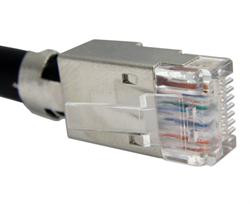Isolated Grounds can do more than just provide protection from damaging RF noise.
Isolated Grounds can do more than just provide protection from damaging RF noise.
Looking at your question, as well as the feedback, got me to thinking about "Objectionable Current" and how the isolated ground assists in dealing with this unplanned current flow on the grounding system. I put it to print-
The Isolated Ground (IG) typically serves a load or device in the form of an Equipment Grounding Conductor (EGC), which is shielded from excessive RF noise by donning a mandatory insulation for its entire length. On top of that, this Isolated Ground Conductor is required to stay remote (disconnected) from all other grounding splices within the grounding system, until it reaches its target: the EGC terminal bar inside of the panel.
The purpose: To keep unwanted RF noise from entering our delicate electronics via the EGC.
By insulating the IG conductor for its entire length, and prohibiting additional splicing on this conductor to boot, we are providing this equipment grounding conductor a path back to the electrical panel, without allowing it to ever touch another conductive metal on its way there; a conductive metal that may be serving as an antenna for RF noise, through its deliberate contact with structural, plumbing, and electrical metal throughout the building. The Isolated Grounding system is well known for its ability to thwart this nuisance "noise" on electronics, when RF is abundantly present.
But... the Isolated Ground can also serve another purpose. It can function as the equipment grounding conductor (EGC) for a device or load, while providing protection for that load, from any "objectionable current" that may be occurring on the grounding system of that electrical system.
Objectionable Current is not the same as RF Noise. Objectionable current is a measurable current that flows on the EGC system, that ought not be there, but is there due to some improper connection between a grounded conductor (aka white conductor) and a grounded metal surface, or grounding conductor, somewhere else within the system. Objectionable current can also be present because of a failure in a connected-load somewhere on the system, that is letting current bleed through an insulating material and on to the ground of that load, and as a consequence- on to the grounding system of the entire electrical system. This minimal amount of current that is often found on the grounding systems of large and/or older electrical systems, is typically of no consequence to normal inductive/resistive loads, and simply put, doesn't hurt anything. But for delicate Solid-State electronics, this minimal current on the equipment ground, can wreak electrical havoc.
By using an Isolated Grounding conductor, andthen it (by default) not touching any portion of the potentially "charged" equipment grounding system metal, you have greatly reduced the possibility of that small electrical charge being redirected "upwards" through your load's EGC and into your delicate load's electronics. And instead, you have moved the point at which your load's EGC makes contact with this slightly charged equipment grounding system, so that it will be so far away from your delicate equipment, and so close to where the main bonding jumper (MBJ) ties the grounding system, into the grounded (neutral) system, that the objectionable current will have no choice at all, butthat choiceof "least resistance," whereby the current must leave the premises wiring - as well as your delicate electrical load altogether, and exit the premises by way of the service neutral, all the way to the grounded utility co. transformer.


